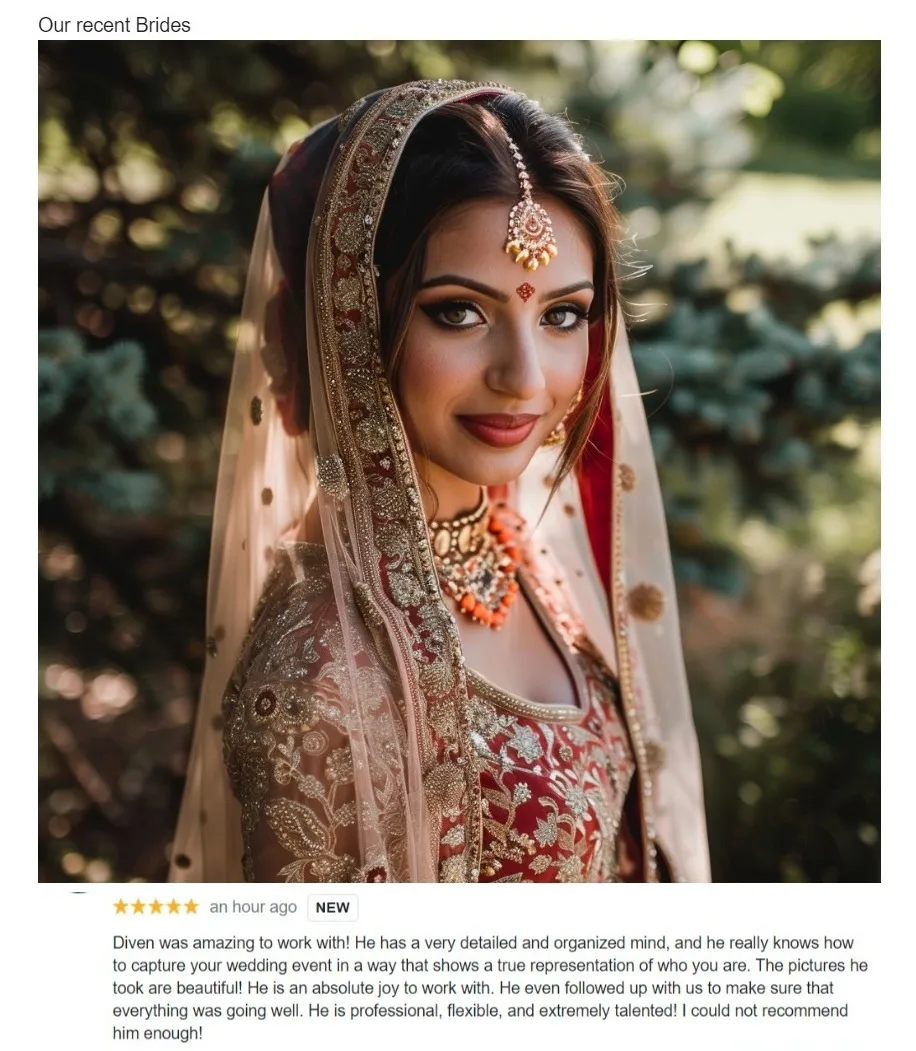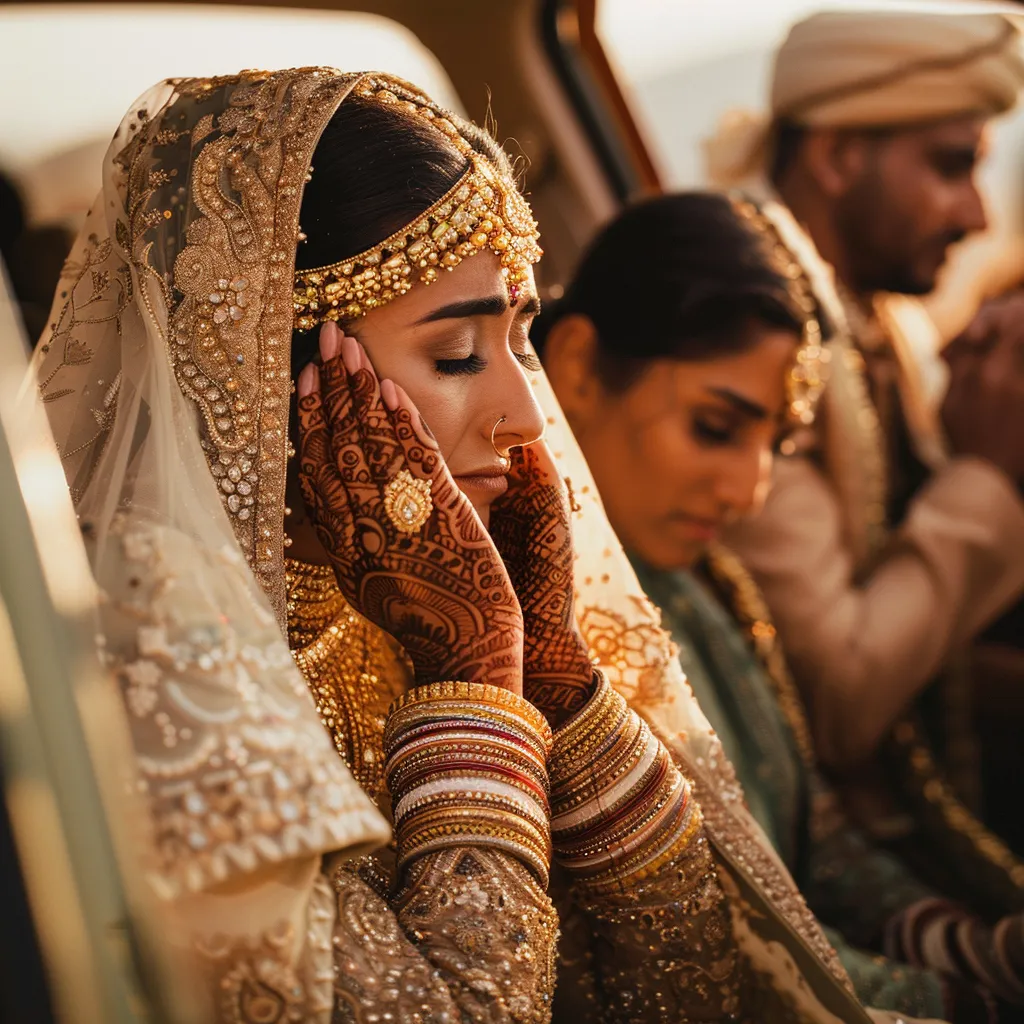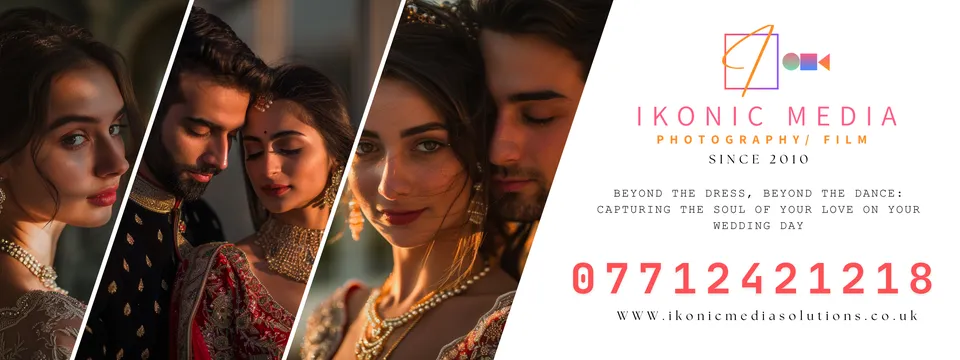
Crafting the Perfect Fusion: Blending Indian and Western Wedding Traditions | Your Guide by a Birmingham Photographer
As a Birmingham-based photographer at Ikonic Media Solutions, I’ve witnessed the beautiful fusion of Indian and Western wedding traditions firsthand. Blending these diverse cultures creates a unique and memorable celebration that honours both families’ heritage. From stunning fusion wedding dresses to intricate ceremony details, ikonic media solutions has captured countless moments where couples seamlessly merge their backgrounds. In this article, I’ll share my top wedding photography tips for couples planning a fusion wedding, ensuring every aspect of your special day is picture-perfect.
Key Takeaways
- Fusion Weddings Beautifully Blend Indian and Western Traditions, Honouring Both Families’ Heritage
- Pre-Wedding Rituals in Indian Culture Set the Stage for a Lifetime of Love and Commitment
- Couples Creatively Merge Indian and Western Elements in Wedding Attire, Food, and Decor
- Thoughtful Planning and Clear Communication Are Crucial for Successful Fusion Ceremonies
- Music and Cuisine Play Vital Roles in Creating a Unique Atmosphere That Celebrates Both Cultures
Crafting Understanding and Respect for Traditions

As a Birmingham photographer specialising in fusion weddings, I’ve witnessed the beautiful blend of Indian and Western traditions. The bride’s journey often begins with sacred pre-wedding rituals rooted in Hinduism, whilst also incorporating elements of Western culture, such as the iconic white wedding dress. These ceremonies, steeped in rich symbolism, set the stage for a union that honours both family traditions. From the vibrant hues of the Hindu ceremony to the elegant simplicity of Western customs, I’ve learnt to capture the essence of each moment, ensuring that every photograph tells the story of two cultures coming together in harmony.
Discover the Significance of Pre-Wedding Rituals
As a photographer who’s documented countless fusion weddings, I’ve come to appreciate the profound significance of pre-wedding rituals in Indian culture. These ceremonies, deeply rooted in tradition, serve as a beautiful prelude to the marriage itself, setting the stage for a lifetime of love and commitment. From the vibrant Mehndi ceremony to the spiritual Ganesh Puja, each ritual carries its own unique symbolism and importance within the context of a Hindu wedding.
I’ve observed that these pre-wedding rituals not only honour centuries-old traditions but also foster a sense of unity between the families of the bride and groom. They create opportunities for relatives and friends to come together, participate in the celebrations, and bless the couple before the main wedding ceremony and reception. Here’s a brief overview of some key pre-wedding rituals I’ve encountered:
Respecting Both Family Traditions
I’ve witnessed firsthand how fusion weddings beautifully blend Indian and Western traditions, honouring both families’ heritage. The bridegroom’s baraat, a joyous procession steeped in Indian custom, often coexists with Western elements like the exchange of rings. This harmonious mix extends to clothing and jewellery choices, with brides often donning both a traditional Indian lehenga and a Western white gown.
As a photographer, I’ve learnt to capture the nuances of these blended celebrations, from the intricate henna designs to the cutting of the wedding cake. The key to a successful fusion wedding lies in open communication between families, ensuring that both sides feel their traditions are respected and represented. This thoughtful approach creates a truly unique and memorable celebration that reflects the couple’s shared journey.
The journey from understanding traditions to selecting attire ignites a thrilling new chapter in your wedding planning. Let’s dive into the exciting world of fusion wedding outfits, where cultural heritage meets contemporary style!
Choosing the Perfect Fusion Wedding Outfits
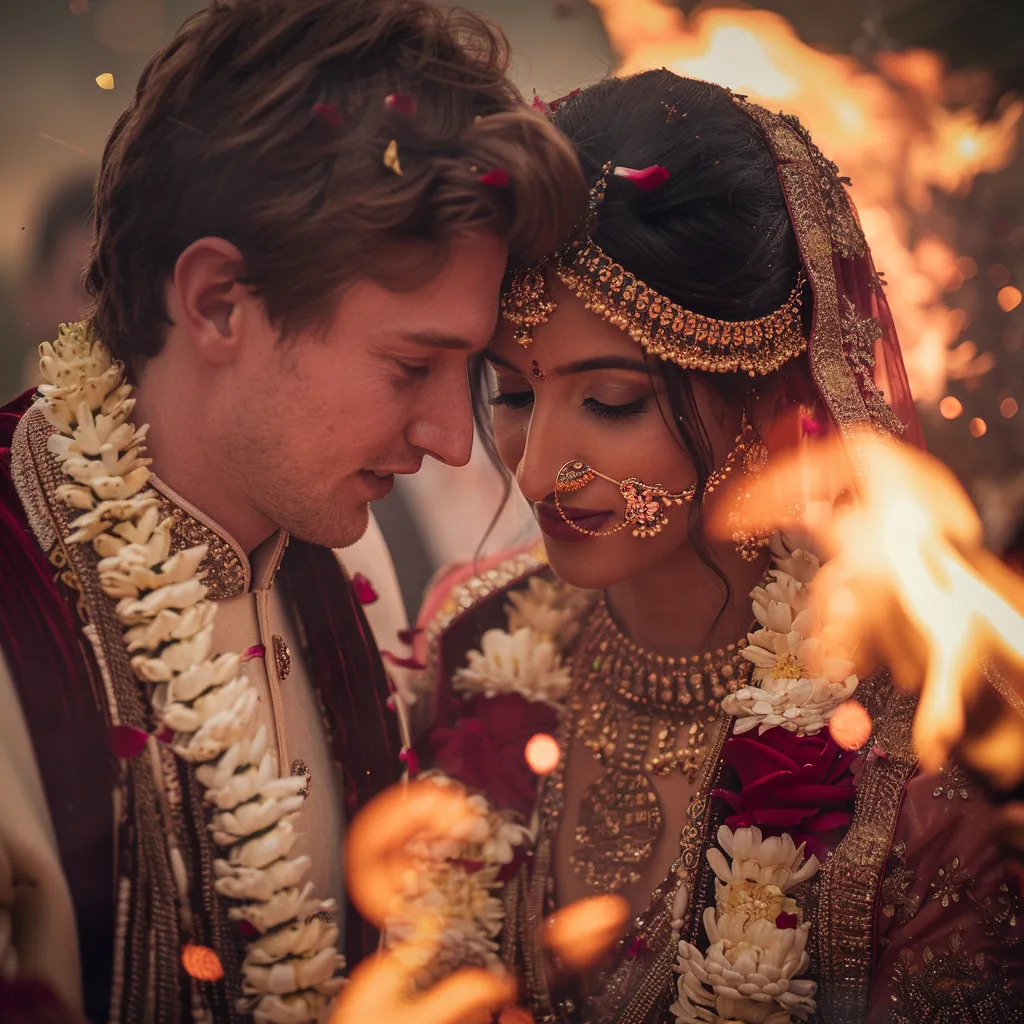
As a Birmingham photographer specialising in fusion weddings, I’ve witnessed the beautiful interplay of traditional Indian and Western attire. Couples often seek creative ways to blend cultural elements, from incorporating henna-inspired patterns into Western gowns to choosing a white sari for the altar. The fusion extends beyond clothing, influencing everything from the mehndi ceremony to the first dance. I’ve captured countless moments where brides seamlessly transition between ornate lehengas and sleek white dresses, symbolising the harmonious union of two distinct cultures. This thoughtful approach to wedding attire not only honours both heritages but also creates stunning visual narratives that I’m privileged to document.
Incorporating Indian Designs Into Western Attire
In my experience as a Birmingham photographer, I’ve observed a growing trend of incorporating Indian designs into Western attire for fusion weddings. Brides often choose to embellish their white gowns with intricate embroidery inspired by traditional Indian patterns, creating a stunning blend of “wedding customs by country”. This fusion of fashion extends to bridesmaids’ dresses, where subtle Indian motifs add a touch of cultural richness to Western silhouettes.
I’ve captured countless moments where couples have creatively merged Indian and Western elements in their wedding attire. From saris reimagined as flowing evening gowns to sherwanis paired with tailored trousers, the possibilities are endless. This harmonious blend extends beyond clothing to encompass food, decor, and overall wedding aesthetics:
- Incorporating henna-inspired patterns into Western bridal gowns
- Adding Indian-style embroidery to bridesmaids’ dresses
- Fusing traditional Indian jewellery with Western wedding attire
- Blending Indian and Western cuisine for a unique culinary experience
- Incorporating vibrant Indian colours into Western-style floral arrangements
Selecting a White Indian Dress for the Wedding
As a wedding photographer in Birmingham, I’ve witnessed a growing trend among brides opting for white Indian dresses, beautifully merging Western and Eastern traditions. These elegant ensembles often feature intricate embroidery and delicate beadwork, creating a stunning canvas for photography. I’ve captured countless moments where the pristine white of the dress contrasts beautifully with the vibrant colours of traditional Indian wedding decor, including statues of Ganesha adorned with flowers.
The choice of a white Indian dress often reflects the couple’s desire to honour both their cultural heritage and contemporary Western influences. I’ve observed how this fusion extends beyond attire, influencing the music selection and religious ceremonies. As a photographer, I strive to capture the essence of these blended traditions, showcasing the unique beauty of each couple’s interpretation of their shared cultural legacy.
As your attire beautifully blends cultures, the ceremony itself can mirror this fusion. Let’s explore how to seamlessly weave Indian and Western traditions into a truly unique wedding celebration.
Integrating Indian and Western Ceremonies
As a Birmingham photographer, I’ve witnessed the beautiful fusion of Indian and Western wedding ceremonies firsthand. These blended celebrations artfully weave together rich traditions from both cultures, creating a unique tapestry of love and unity. I’ve seen couples exchange rings alongside the tying of the mangalsutra, and watched as the groom’s boutonnière complemented the bride’s intricate henna designs. The key to a successful fusion ceremony lies in thoughtful planning and respectful adaptation of traditional rituals. From determining the order of events to incorporating meaningful cultural elements, each decision reflects the couple’s shared heritage and vision for their future as husband and wife.
Planning the Order of Ceremonies
As a Birmingham photographer, I’ve observed that planning the order of ceremonies for a fusion wedding requires careful consideration. I often advise couples to start with a traditional Hindu ceremony, including rituals like the mandapa and homa, followed by a Western-style exchange of vows and rings. This approach allows for a smooth transition between cultural elements, ensuring both families feel represented.
I’ve found that clear communication is key when planning these intricate ceremonies. I encourage couples to send detailed emails to their families and wedding party, outlining the order of events and explaining the significance of each ritual. This helps guests from both cultures feel included and engaged throughout the celebration, from the initial Hindu ceremonies to the final Western-style reception.
Adapting Traditional Rituals for a Blended Ceremony
As a Birmingham photographer, I’ve witnessed the creative ways couples adapt traditional rituals for their blended ceremonies. I’ve seen Hindu priests collaborate with Christian ministers to create a unified service, incorporating elements from both faiths. This often involves a puja ceremony followed by a white wedding blessing, beautifully merging the spiritual traditions of India and the United Kingdom.
I’ve captured moments where couples exchange garlands during the Hindu ceremony, then seamlessly transition to exchanging rings in the Western style. These thoughtful adaptations not only honour both families’ heritage but also create unique, personal moments that I’m privileged to document. The result is a celebration that truly represents the couple’s shared journey and cultural backgrounds.
Music sets the tone for your celebration, merging cultures through melody. Let’s explore how to harmonise Indian and Western tunes for a truly unforgettable soundtrack to your special day.
Blending Musical Tastes for the Wedding
As a Birmingham photographer specialising in fusion weddings, I’ve witnessed the beautiful blend of musical traditions that accompanies these cross-cultural celebrations. From the moment guests receive their wedding invitations to the final notes of the reception, music plays a crucial role in setting the tone for the day. I’ve captured grooms in stylish suits swaying to Bollywood hits, whilst brides with flower bouquets dance to Western classics. The exchange of the mangala sutra is often accompanied by traditional Indian melodies, seamlessly transitioning to contemporary tunes as guests shower the couple with rice. To achieve this harmonious mix, couples often seek performers well-versed in both musical worlds, ensuring a soundtrack that truly represents their unique love story.
Combining Bollywood Hits With Western Classics
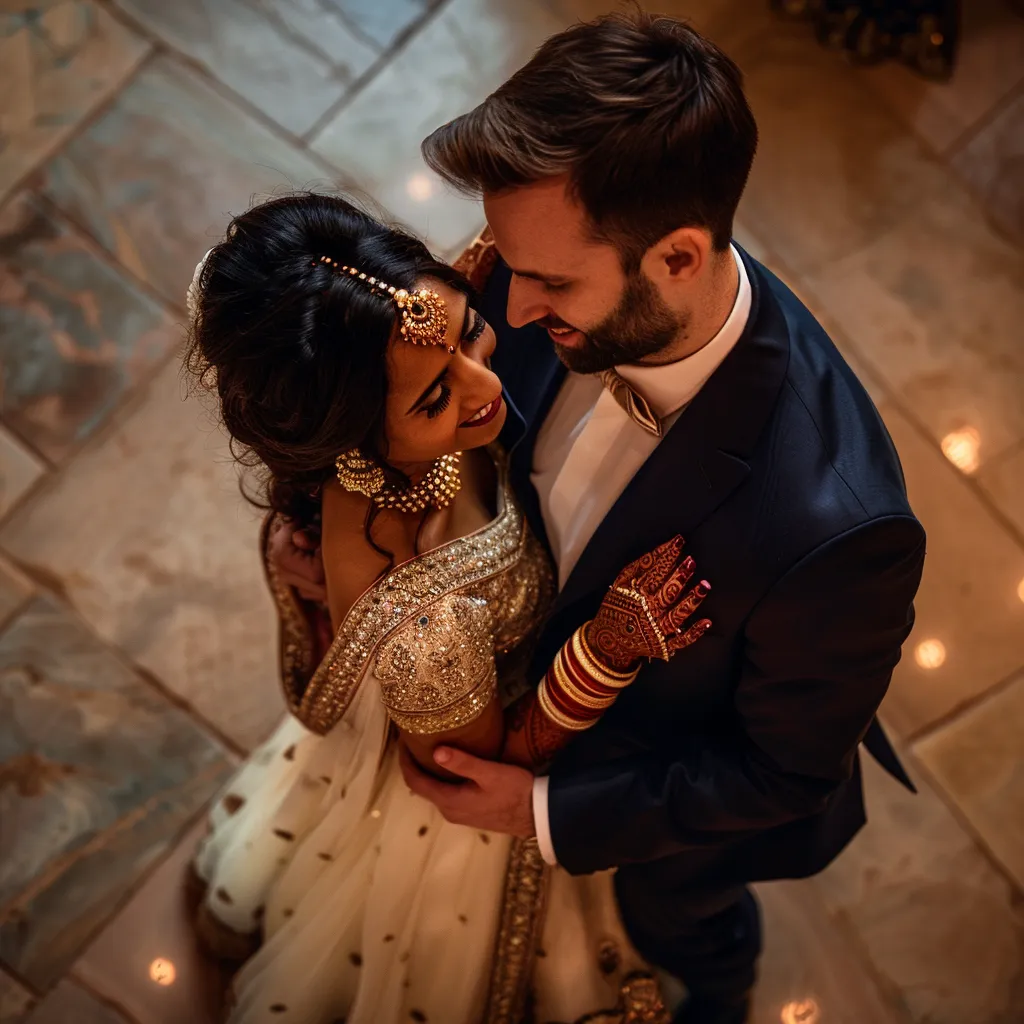
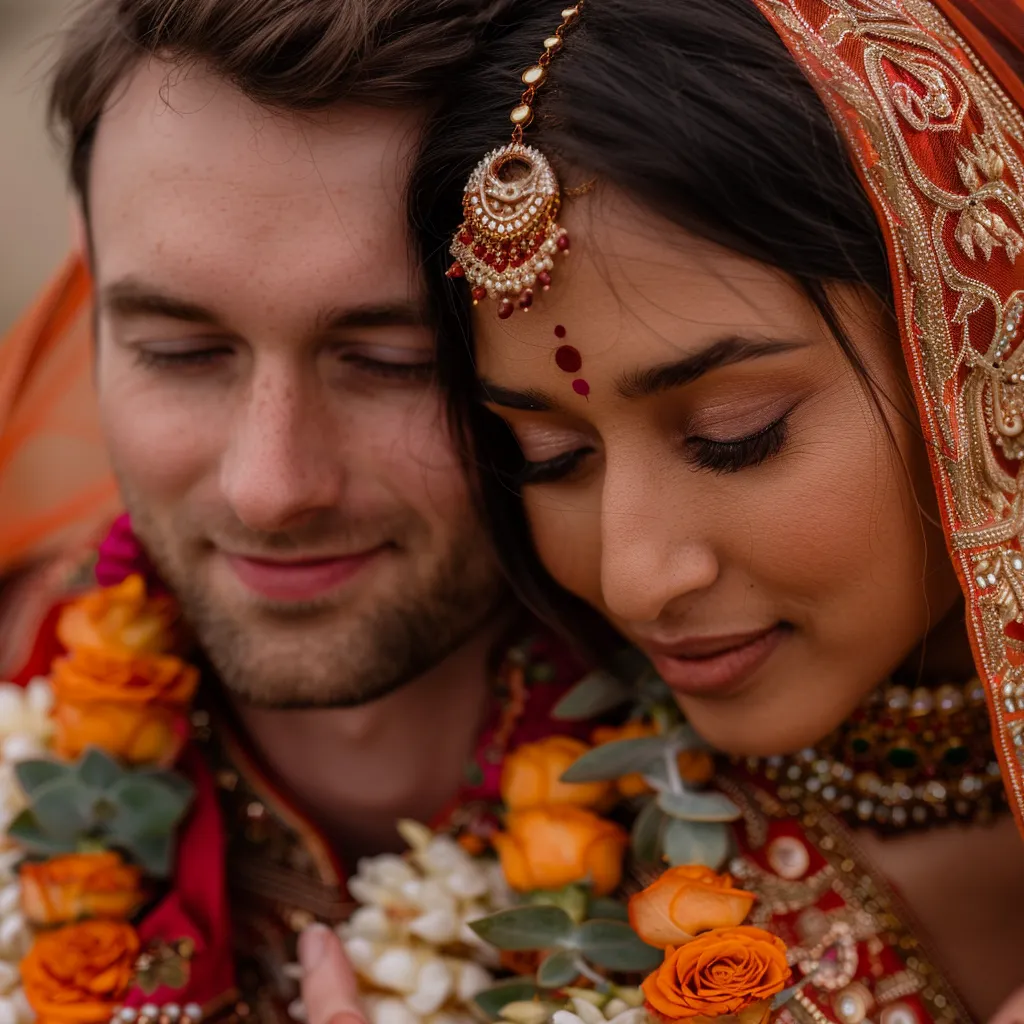
I’ve witnessed the magical fusion of Bollywood hits and Western classics at countless weddings in Birmingham. From the vibrant energy of Indian dance numbers to the romantic melodies of traditional ballads, this musical blend creates an atmosphere that truly celebrates both cultures. I’ve captured beautiful moments of brides in silk saris performing choreographed Bollywood routines, followed by the groom leading a Western-style first dance.
The key to successfully combining these diverse musical styles lies in thoughtful planning and seamless transitions. I’ve seen couples incorporate elements of Indian cuisine into their reception menu, whilst a live band alternates between Bollywood favourites and pop hits. This musical journey often begins with a prayer or blessing, accompanied by traditional Indian instruments, before evolving into a lively celebration that has everyone, from grandparents to little ones, dancing the night away.
Hiring Performers Familiar With Both Traditions
As a Birmingham photographer, I’ve found that hiring performers familiar with both Indian and Western traditions is crucial for a successful fusion wedding. I’ve captured magical moments where musicians seamlessly transition from classical Indian ragas to Western pop hits, creating a vibrant atmosphere that celebrates both cultures. These versatile performers often incorporate elements from South India and Pakistan into their repertoire, ensuring a truly inclusive musical experience.
I’ve witnessed how skilled performers can tie together various aspects of the wedding, from the ceremony to the reception. They might play traditional music during the cutting of the wedding cake, then switch to upbeat Bollywood tunes as the couple shares their first dance. I’ve even seen musicians incorporate the delicate sound of lace-covered tambourines into their performances, adding a unique touch to the celebration.
Music harmonises your celebration, but delectable dishes unite your guests. Let’s explore how to tantalise taste buds with a fusion wedding menu that’s as diverse as your love story.
Fusion Wedding Menu Ideas

As a Birmingham photographer, I’ve witnessed the delightful fusion of culinary traditions at many weddings. The menu often becomes a canvas for creativity, blending the rich spices of Indian cuisine with beloved Western dishes. I’ve captured brides in stunning lehengas and gowns alike, savouring beautifully presented fusion dishes that celebrate their shared heritage. From Pakistan-inspired appetisers to British classics with an Indian twist, these culinary creations are a feast for both the eyes and the palate. The mantra for successful fusion menus seems to be balance – honouring both cultures whilst creating something uniquely beautiful, much like the union itself.
Creating a Menu That Blends Indian Spices With Western Dishes
As a Birmingham photographer, I’ve witnessed the artful fusion of Indian spices with Western dishes at countless weddings. I’ve captured the joy on couples’ faces as they sample innovative creations like tandoori-spiced roast chicken or curry-infused shepherd’s pie. These culinary masterpieces often mirror the couple’s journey down the aisle, blending traditions to create something uniquely beautiful.
I’ve observed how skilled wedding planners work closely with caterers to craft menus that honour both cultures. From Anand Karaj ceremonies to Western vow exchanges, the food becomes a central part of the celebration. I’ve seen guests’ faces light up with happiness as they discover familiar flavours in unexpected dishes, creating a shared experience that brings everyone together.
Catering Considerations for a Diverse Guest List
As a Birmingham photographer, I’ve witnessed the importance of thoughtful catering for diverse guest lists at fusion weddings. I’ve seen couples incorporate elements from Ganesh Chaturthi celebrations into their menu planning, whilst also considering the dietary preferences of groomsmen from South Asia. This careful balance ensures that all guests, regardless of their cultural background, feel welcomed and catered for.
I’ve captured moments where the sacred fire of Agni is honoured through the menu choices, with dishes that symbolise the god’s purifying flames. Simultaneously, I’ve observed how caterers skilfully adapt Western classics to accommodate diverse palates, creating a truly inclusive dining experience. Here are some key considerations I’ve noted for catering to a diverse guest list:
- Offering a variety of vegetarian and non-vegetarian options
- Clearly labelling dishes with dietary information
- Providing a mix of spice levels to suit different preferences
- Including familiar dishes from both cultures
- Offering alternatives for guests with specific dietary requirements
Now that we’ve tantalised your taste buds, let’s feast our eyes on stunning décor. Blending Indian and Western aesthetics creates a visual masterpiece that will leave your guests in awe.
Decorating Ideas for Indian and Western Weddings
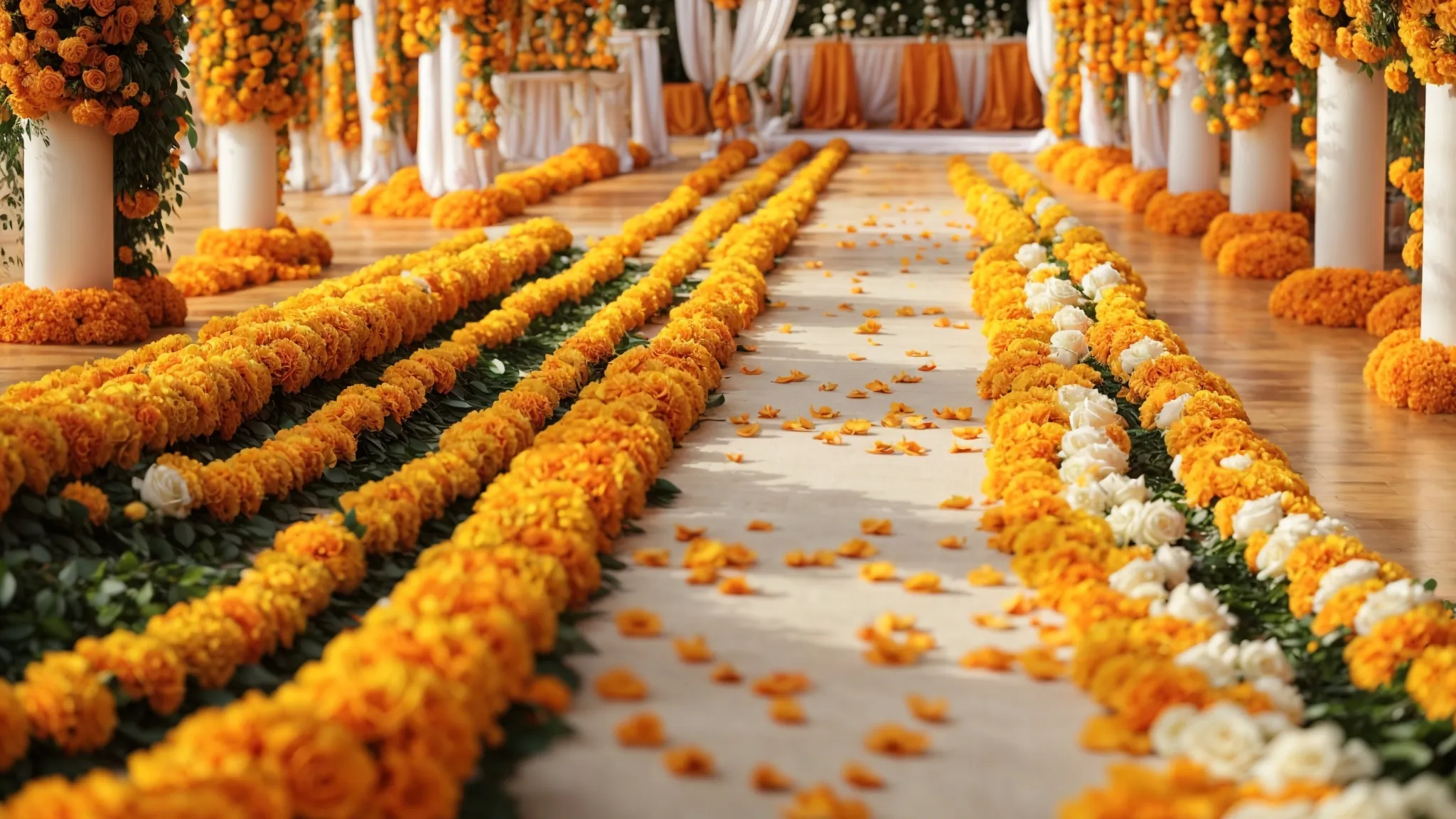
As a Birmingham photographer specialising in fusion weddings, I’ve witnessed the beautiful blending of Indian and Western decorative elements. The harmonious union of two cultures is often reflected in the decor, symbolising the couple’s shared journey of love. I’ve captured stunning scenes where traditional cholis hang alongside delicate engagement rings, representing the merging of two worlds. The intricate balance of dharma and Western values is often mirrored in the thoughtful arrangement of flowers and garlands. From vibrant colour schemes that honour both traditions to themed decor that tells a unique love story, these fusion weddings create a visual feast that I’m privileged to document.
Merging Themes for Decor That Represents Both Cultures
I’ve witnessed the beautiful fusion of Indian and Western decor themes at countless weddings in Birmingham. From elegant sleeves adorned with intricate henna designs to traditional kanyadana ceremonies complemented by Western floral arrangements, these blended celebrations create a visual feast. I’ve captured stunning moments where the sacred sutra thread intertwines with a sparkling wedding ring, symbolising the union of two cultures.
As a photographer, I’ve observed how couples thoughtfully incorporate elements of kama, the Hindu god of love, into their Western-style reception decor. This harmonious blend often extends to the colour palette, with rich Indian hues complementing classic Western whites and pastels. I’ve seen couples create unique centrepieces that combine traditional Indian brass vessels with English rose arrangements, perfectly encapsulating their shared heritage.
Using Colour Schemes That Appeal to Both Traditions
As a Birmingham photographer, I’ve witnessed the artful blending of colour schemes that appeal to both Indian and Western traditions. I’ve captured vibrant reds and golds, symbolising luck and prosperity in Indian culture, harmoniously paired with soft pastels favoured in Western weddings. This fusion often extends to the bridal attire, where I’ve photographed brides in stunning georgette and chiffon gowns that incorporate traditional Indian embroidery.
I’ve observed how couples thoughtfully incorporate the concept of artha, or material well-being, into their colour choices. The result is a rich tapestry of hues that not only pleases the eye but also holds deep cultural significance. From the ceremony decor to the honeymoon send-off, these carefully chosen colour schemes create a cohesive visual narrative that I’m privileged to document. Here are some popular colour combinations I’ve encountered in fusion weddings:
- Deep red and ivory
- Royal blue and gold
- Emerald green and blush pink
- Purple and silver
- Saffron and cream
Frequently Asked Questions
How can couples respectfully blend Indian and Western wedding traditions?
Blending Indian and Western wedding traditions can be a beautiful way to honour both cultures and create a unique celebration. One approach is to incorporate elements from both traditions into key moments of the ceremony. For example, couples might exchange rings as in Western weddings, followed by the traditional Indian custom of exchanging garlands. The bride could wear a white dress for part of the day and change into a colourful lehenga for another portion. Couples can also blend traditions in their decor, using Western-style floral arrangements alongside vibrant Indian textiles and patterns. For the reception, couples can seamlessly merge both cultures through food, music, and entertainment. Serving a mixture of Indian and Western cuisine allows guests to sample dishes from both backgrounds. Playing a mix of Bollywood hits and Western pop music encourages everyone to join in the festivities. Some couples opt for two separate ceremonies – one traditional Indian and one Western – followed by a joint reception. This approach allows each family to fully experience their own customs whilst coming together to celebrate as one. The key is open communication with both families and a willingness to compromise, ensuring that everyone feels respected and included in the celebrations.
What are some popular fusion wedding outfit choices for brides and grooms?
Fusion wedding outfits have become increasingly popular among modern couples who wish to blend traditional and contemporary styles. For brides, a popular choice is combining a classic white wedding gown with elements of their cultural attire. This could mean adding intricate embroidery, vibrant colours, or traditional jewellery to a Western-style dress. Alternatively, some brides opt for a traditional outfit like a saree or lehenga in non-traditional colours such as pastel shades or even white, creating a unique fusion look. Grooms are also embracing fusion fashion for their wedding day. Many choose to pair a Western-style suit with traditional accessories like a turban or pagri. Others might wear a sherwani or kurta in modern cuts and fabrics, combining it with dress trousers or even jeans for a more casual fusion look. Some grooms even opt for a complete fusion outfit, such as a achkan (a knee-length coat) worn over a dress shirt and trousers, blending Eastern and Western styles seamlessly.
How can couples incorporate both Indian and Western ceremonies into their wedding day?
Incorporating both Indian and Western ceremonies into a wedding day can be a beautiful way to honour different cultural traditions. Many couples choose to have separate ceremonies on the same day, often starting with a traditional Indian ceremony in the morning followed by a Western ceremony in the afternoon. This allows for a full celebration of both cultures and gives guests the opportunity to experience the richness of both traditions. The Indian ceremony might include rituals like the mandap, the exchange of garlands, and the seven steps around the sacred fire, whilst the Western ceremony could feature the traditional white dress, exchange of rings, and walking down the aisle. Another approach is to blend elements from both cultures into a single ceremony. This might involve incorporating Indian customs like the application of mehndi or the tying of the mangalsutra into a more Western-style ceremony. Alternatively, couples might choose to have the bride wear a white wedding dress for the ceremony but change into a colourful lengha for the reception. The key is to prioritise the elements that are most meaningful to the couple and their families, creating a unique celebration that reflects their shared heritage and personal preferences.
What music genres work well for a fusion wedding reception?
When it comes to fusion wedding receptions, combining different music genres can create an exciting and inclusive atmosphere for all guests. Popular choices often include a mix of contemporary Western music with traditional sounds from the couple’s cultural backgrounds. For instance, blending Bollywood hits with modern pop and R&B tracks can work wonderfully for an Anglo-Indian wedding. Similarly, incorporating Latin rhythms with current chart-toppers can be perfect for a Hispanic-British celebration. Another successful approach is to seamlessly transition between genres throughout the evening. Starting with softer, more traditional music during dinner and gradually progressing to more upbeat, danceable tunes as the night goes on can keep the energy flowing. This might involve moving from classical instrumental pieces to jazz standards, then onto funk, disco, and finally ending with electronic dance music. The key is to strike a balance that reflects the couple’s tastes and heritage while ensuring there’s something for everyone to enjoy.
Which menu items are ideal for a fusion Indian-Western wedding feast?
When planning a fusion Indian-Western wedding feast, it’s essential to strike a balance between traditional Indian flavours and popular Western dishes. For starters, consider serving a mix of canapés such as mini samosas, tandoori chicken skewers, and bruschetta with a spicy twist. Main courses could include a combination of classic Indian curries like butter chicken or lamb rogan josh alongside Western favourites like roast beef or grilled salmon. To cater to vegetarian guests, offer dishes like paneer tikka masala and vegetable lasagne. For sides and accompaniments, blend Indian and Western elements by serving naan bread and garlic mashed potatoes, or pilau rice and roasted vegetables. Desserts provide an excellent opportunity to showcase fusion creativity, with options like cardamom-infused crème brûlée, mango cheesecake, or gulab jamun trifle. Don’t forget to include a selection of refreshing beverages, such as mango lassi, cucumber gin and tonic, and masala chai, to complement the diverse menu and satisfy all palates.
Conclusion
Fusion weddings beautifully blend Indian and Western traditions, creating a unique celebration that honours both cultures. As a Birmingham photographer, I’ve witnessed the careful planning and thoughtful adaptations required to seamlessly integrate diverse customs, from attire and ceremonies to music and cuisine. These celebrations offer a rich tapestry of experiences, reflecting the couple’s shared heritage and vision for their future together. By embracing the best of both worlds, fusion weddings not only create stunning visual narratives but also foster understanding and respect between families, making them truly unforgettable events.
